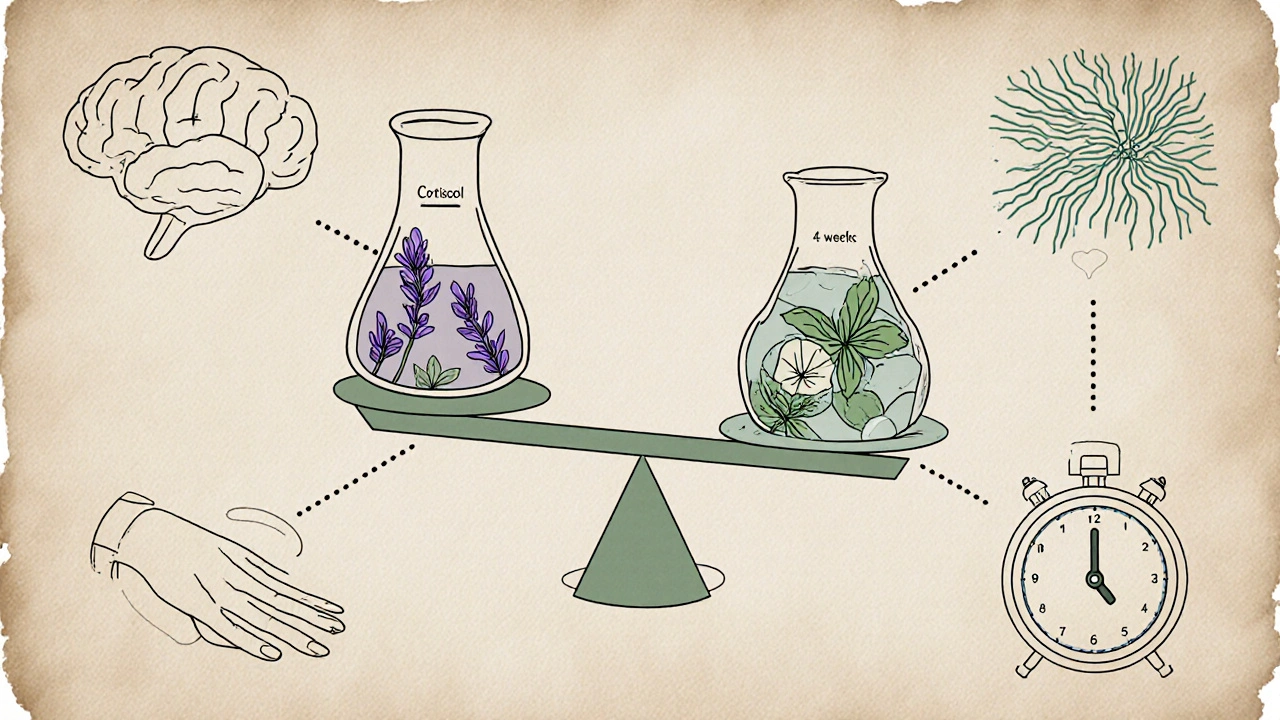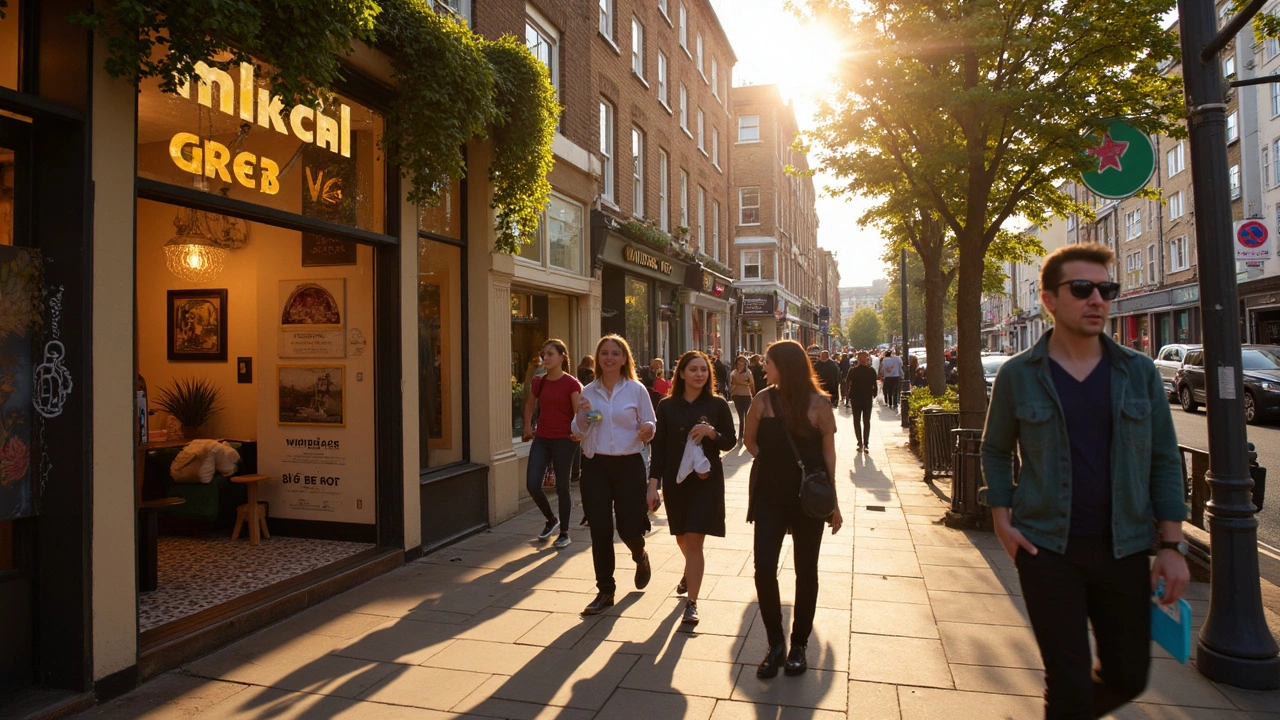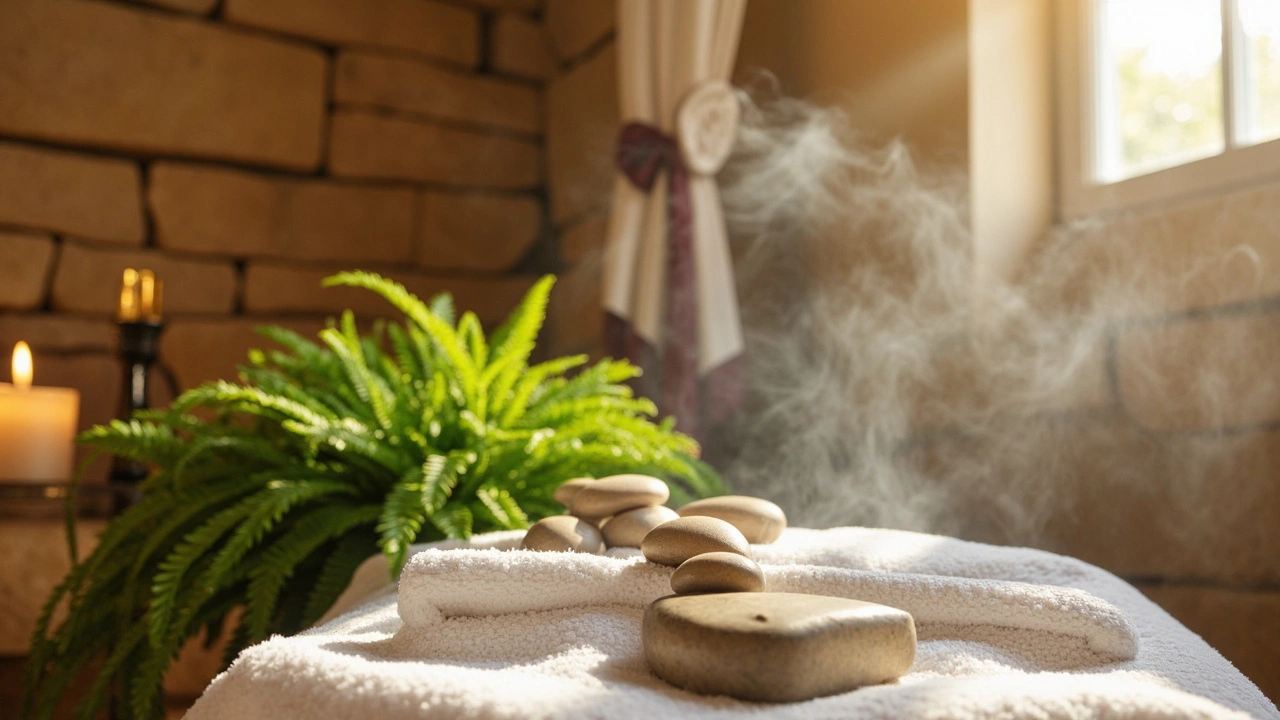The Science Behind Aromatherapy Massage Benefits

Ever had a massage where the scent of lavender or eucalyptus made you feel calmer before your therapist even touched your skin? That’s not just coincidence. Aromatherapy massage isn’t just about relaxation-it’s a blend of touch and chemistry that science is now starting to fully understand.
How Aromatherapy Massage Works
Aromatherapy massage combines the physical effects of manual therapy with the biological impact of essential oils. When you get this type of treatment, two systems in your body are activated at once: your nervous system through pressure and movement, and your limbic system through smell.
The limbic system is the emotional center of your brain. It controls memory, mood, and stress responses. When you inhale essential oils like bergamot, chamomile, or frankincense, molecules travel through your nose to the olfactory bulb, which connects directly to the amygdala and hippocampus. That’s why a whiff of orange oil can instantly remind you of childhood summers-or why lavender can make you feel safe before you even realize you needed it.
Meanwhile, the massage itself increases blood flow, reduces muscle tension, and stimulates the release of endorphins. The oils don’t just sit on your skin-they’re absorbed through the epidermis and enter your bloodstream. Studies show that compounds like linalool in lavender and 1,8-cineole in eucalyptus can be detected in the blood within minutes of topical application.
The Proven Benefits
Let’s cut through the hype. There’s real data behind what aromatherapy massage does.
A 2023 meta-analysis published in the Journal of Alternative and Complementary Medicine reviewed 17 clinical trials involving over 1,200 participants. The consistent finding? Aromatherapy massage significantly lowered cortisol levels-by an average of 24%-compared to massage alone. Cortisol is your body’s main stress hormone. Lower levels mean less anxiety, better sleep, and improved immune function.
In another study from the University of Miami’s Touch Research Institute, women undergoing chemotherapy reported 30% less nausea and 40% higher mood scores after weekly aromatherapy massage sessions using ginger and peppermint oils. That’s not placebo. Those oils have anti-emetic properties that work alongside the physical soothing of touch.
For people with chronic pain, like those with fibromyalgia or arthritis, the combination of pressure and scent makes a measurable difference. One 2022 trial found that participants using a blend of lavender, rosemary, and peppermint oils during massage experienced a 35% greater reduction in pain intensity over eight weeks than those who received massage with unscented oil.
Which Oils Actually Work?
Not all essential oils are created equal. Some are marketing gimmicks. Others have decades of clinical backing.
- Lavender: The most researched. Proven to reduce heart rate, lower blood pressure, and improve sleep quality. Used in over 70% of clinical aromatherapy studies.
- Bergamot: A citrus oil that boosts serotonin without causing drowsiness. Ideal for daytime sessions. Studies show it reduces symptoms of mild depression.
- Chamomile (Roman): Anti-inflammatory and calming. Works well for sensitive skin and anxiety-related muscle tension.
- Eucalyptus: Clears nasal passages and reduces respiratory inflammation. Great for colds or sinus congestion.
- Peppermint: Activates cold receptors in the skin, creating a cooling sensation that distracts from pain signals. Also helps with headaches and nausea.
- Frankincense: Has anti-inflammatory compounds that may help with joint stiffness and chronic inflammation.
Blends matter too. A mix of lavender and bergamot works better for anxiety than either alone. Peppermint and eucalyptus together are more effective for congestion than either oil used singly. This is called the entourage effect-where compounds in different oils enhance each other’s impact.

What Happens in Your Body During a Session
Here’s the step-by-step biology of what’s going on when you lie down for an aromatherapy massage:
- Inhalation: You breathe in volatile organic compounds from the oils. These bind to receptors in your nasal lining, sending signals to the brain’s emotional center.
- Topical Absorption: Oils penetrate the skin through hair follicles and sebaceous glands. They enter capillaries and circulate in the bloodstream within 10-20 minutes.
- Neurochemical Shift: The brain releases serotonin and dopamine. Cortisol drops. Your parasympathetic nervous system kicks in-your body switches from "fight or flight" to "rest and digest."
- Muscle Response: Massage increases circulation, flushes out lactic acid, and reduces muscle spasms. The oils enhance this by relaxing smooth muscle tissue and reducing inflammation.
- Long-Term Effect: With regular sessions, your body learns to return to calm faster. This is called autonomic regulation. It’s why people who get weekly aromatherapy massages report better stress resilience over time.
Who Should Avoid It?
Aromatherapy massage is safe for most people-but not everyone.
People with asthma or severe allergies should avoid strong citrus or mint oils. Some oils, like wintergreen and birch, contain methyl salicylate, which can be toxic in high doses. Pregnant women should skip oils like rosemary, clary sage, and juniper berry-these can stimulate uterine contractions.
Always ask your therapist about oil concentration. A safe dilution is 1-3% essential oil in a carrier oil like jojoba or sweet almond. Anything above 5% can irritate the skin. If you’re on blood thinners, avoid oils like ginger or cinnamon that have mild anticoagulant properties.

Why It’s More Than Just a Spa Treat
Aromatherapy massage isn’t luxury-it’s preventive medicine. In the UK, the NHS has started referring patients with chronic stress, mild anxiety, and insomnia to licensed aromatherapists as part of integrative care programs. It’s not a replacement for medication, but it’s a powerful tool to reduce reliance on it.
Think of it this way: you wouldn’t ignore a broken bone. But you also wouldn’t wait until you’re in a full-blown panic attack to try calming down. Aromatherapy massage helps your body stay in balance before things spiral. It’s like tuning a guitar before the concert-small adjustments, big results.
What to Look for in a Therapist
Not every massage therapist knows how to use essential oils safely. Look for someone with:
- Certification from a recognized aromatherapy body (like the International Federation of Aromatherapists or NAHA)
- Clear knowledge of oil contraindications and dilution ratios
- Use of pure, therapeutic-grade oils (not fragrance oils-those are synthetic)
- Willingness to customize blends based on your health history
Ask to see the ingredient list. If they can’t tell you what’s in the oil or why they chose it, walk away. This isn’t just a nice smell-it’s a bioactive treatment.
Can You Do It at Home?
You can replicate some benefits at home, but with limits. A self-massage with diluted lavender oil on your wrists or temples can help with anxiety. Adding a few drops to a warm bath can ease muscle soreness.
But you won’t get the same depth of effect. Professional massage therapists know pressure points, muscle anatomy, and how to apply oils to maximize absorption. They also create a sensory environment-dim lights, quiet, warmth-that enhances the nervous system’s response. That’s hard to recreate alone.
If you’re serious about results, aim for one session a week for four weeks. That’s the minimum to retrain your body’s stress response. After that, monthly maintenance works well.
Does aromatherapy massage really reduce stress?
Yes. Multiple clinical studies show that aromatherapy massage lowers cortisol levels by an average of 24% compared to regular massage. The combination of touch and scent activates the parasympathetic nervous system, helping your body shift out of "fight or flight" mode. This effect is measurable through heart rate variability and hormone testing.
Which essential oils are best for sleep?
Lavender is the most effective, backed by over 30 studies. Roman chamomile and vetiver also show strong results. A 2021 trial found that participants who inhaled lavender oil during massage fell asleep 20 minutes faster and reported deeper sleep than those who didn’t. Use 2-3 drops in a carrier oil and apply to the soles of your feet or pillow before bed.
Can aromatherapy massage help with anxiety?
Absolutely. Bergamot, frankincense, and ylang-ylang have been shown to increase serotonin and reduce symptoms of generalized anxiety disorder. In one 8-week trial, participants receiving weekly aromatherapy massage reported a 45% reduction in anxiety scores using the GAD-7 scale. The effects were sustained for up to four weeks after treatment ended.
Are essential oils safe for sensitive skin?
They can be, if properly diluted. Always use a carrier oil like jojoba, sweet almond, or fractionated coconut oil. A safe dilution is 1-2% essential oil (about 6-12 drops per ounce of carrier). Do a patch test 24 hours before your session. Avoid citrus oils if you’ll be in the sun afterward-they can cause photosensitivity.
How long do the effects last?
The immediate calming effect lasts 2-6 hours after a session. But with regular use-once a week for 4-8 weeks-your body learns to regulate stress more efficiently. This is called neuroplasticity in the autonomic nervous system. Many people report feeling calmer even on days they don’t have a massage.
If you’re looking to manage stress, improve sleep, or ease chronic pain without drugs, aromatherapy massage offers a science-backed path. It’s not magic. It’s biology. And it’s working for thousands of people right now-not just in spas, but in hospitals, clinics, and homes across the UK.



